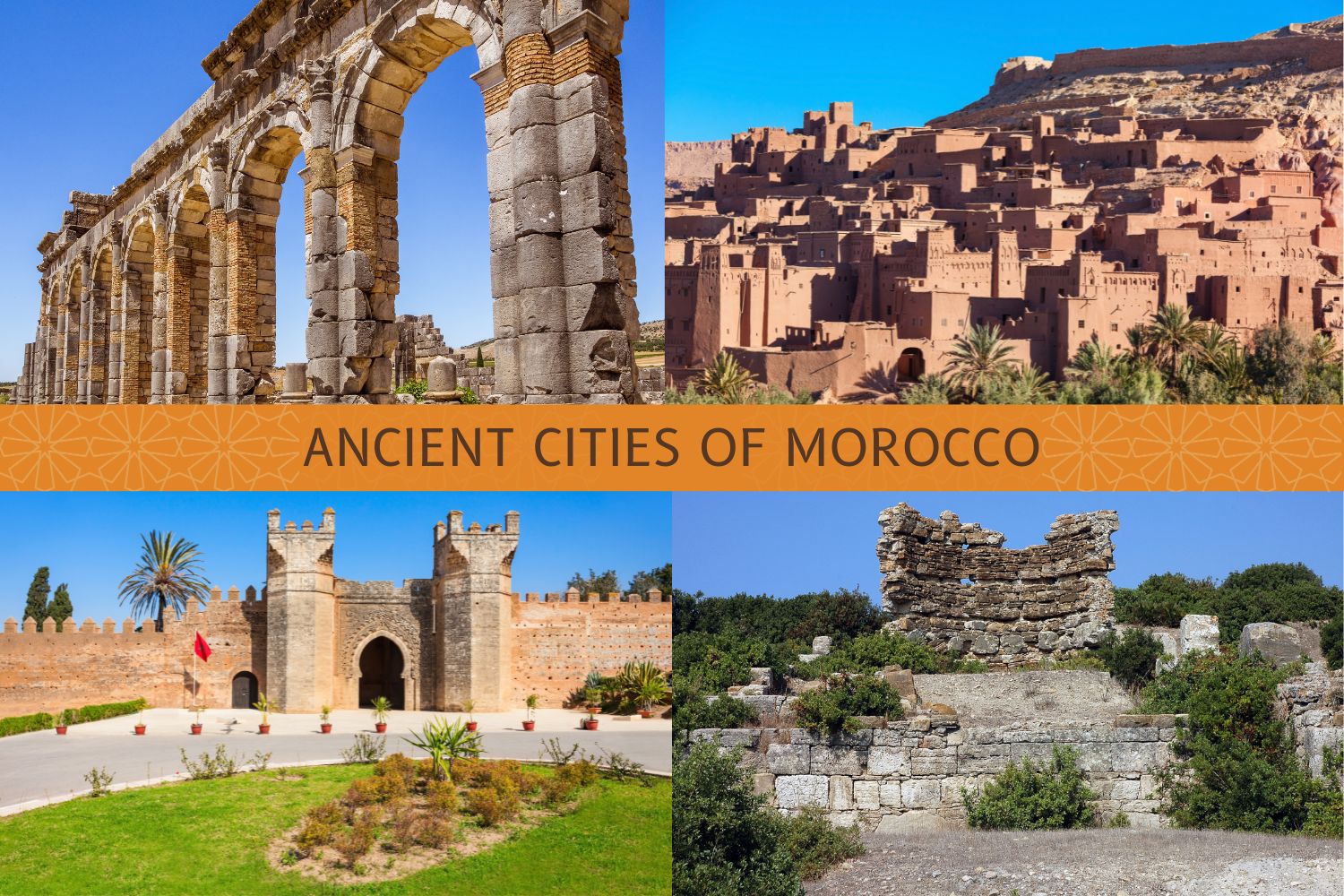
The ancient cities of Morocco invite you to embark on a journey through the depths of rich history. Here, living testaments stand amidst remnants of Roman grandeur and mysterious stone circles. This guide sets the stage for history enthusiasts to indulge their passion in the alluring charm of Morocco’s exceptional ancient cities.
Morocco’s history stretches back more than 1,200 years, yet its land carries even older tales. Phoenicians, Romans, Carthaginians, Christian Berbers, and Muslim Arab dynasties have all left their imprint, shaping the narrative of empires in Morocco. The country is a treasure trove of ancient and prehistoric sites, making it a perfect destination for history lovers.
Break away from the charm of old towns and set out to uncover the allure of ancient sites waiting to be explored in Morocco.
Volubilis
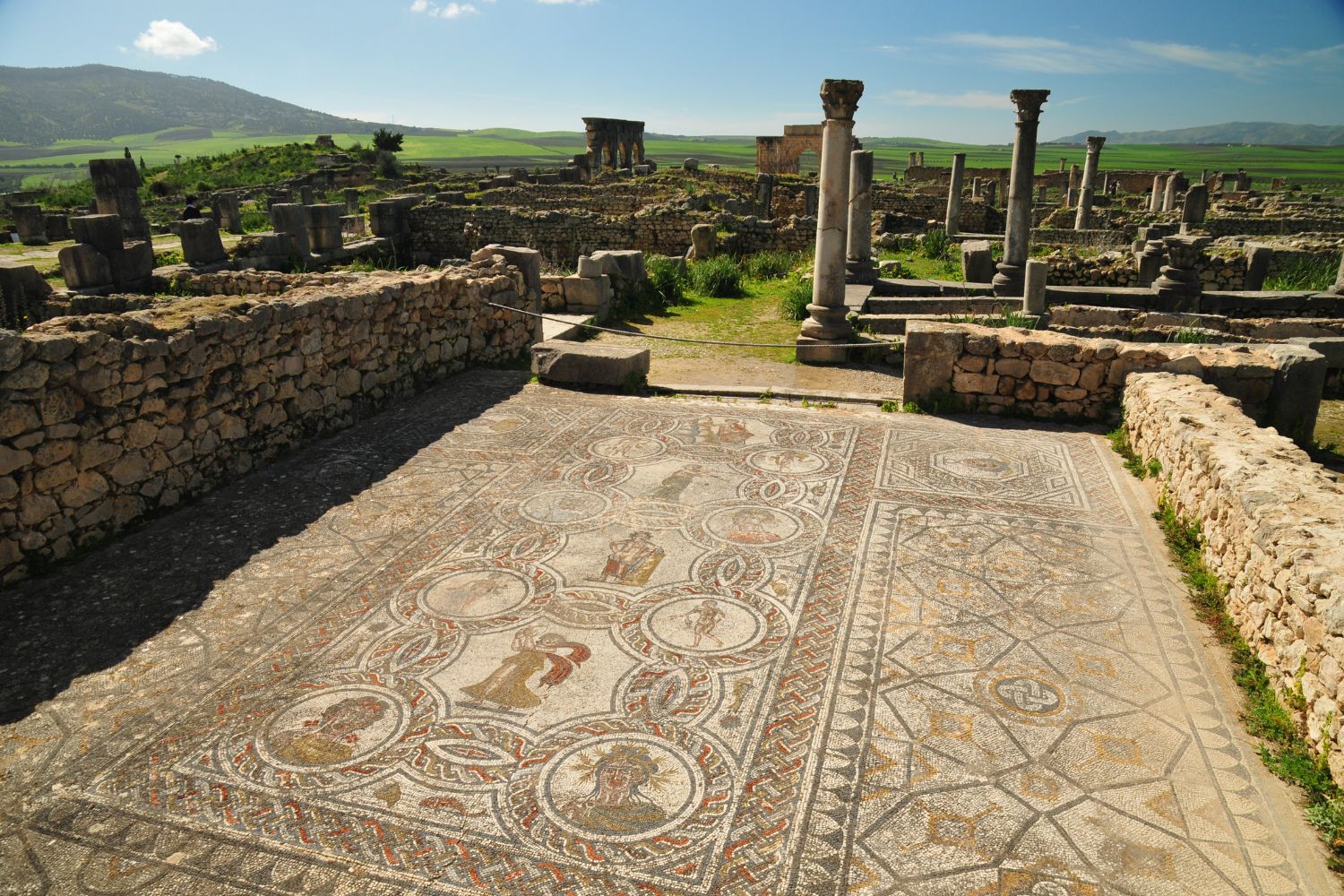
In Morocco’s hills, you’ll find the ancient city of Volubilis—a captivating archaeological site that takes you back in time. It used to be a lively Roman town and is now a UNESCO World Heritage site, showcasing the grandeur of its past. Walking on the old cobblestone streets, you’ll see the remains of impressive villas and detailed mosaics, giving a glimpse into Volubilis’ architectural beauty. Positioned strategically in fertile plains, the city held great importance, and today, visitors can see the well-preserved ruins that tell the story of the once-thriving Roman civilization.
As you stroll through Volubilis, it’s like reading a history book woven into the stones. The grand Arch of Caracalla, built to honor the Roman Emperor, welcomes you into the city. In the ancient villas, colorful mosaics tell stories of daily life and myths, giving you a peek into the artistic and cultural world of Roman Morocco. Every part of Volubilis has tales to tell — of trade, leadership, and the blending of different cultures that defined the city.
Apart from its historical importance, Volubilis provides visitors with a stunning view of the nearby landscape, framed by the distant Atlas Mountains. The mix of ancient ruins set against Morocco’s beautiful natural scenery makes for a captivating experience. Whether you love history or are just exploring, Volubilis welcomes you to discover its mysteries while enjoying the breathtaking surroundings that make this archaeological site truly special.
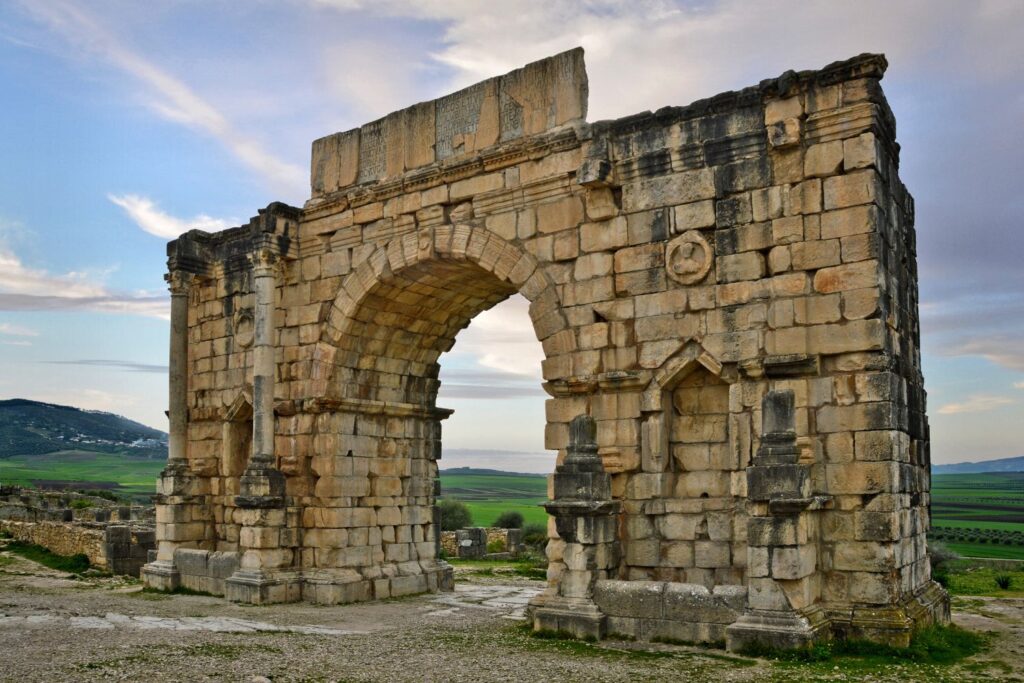
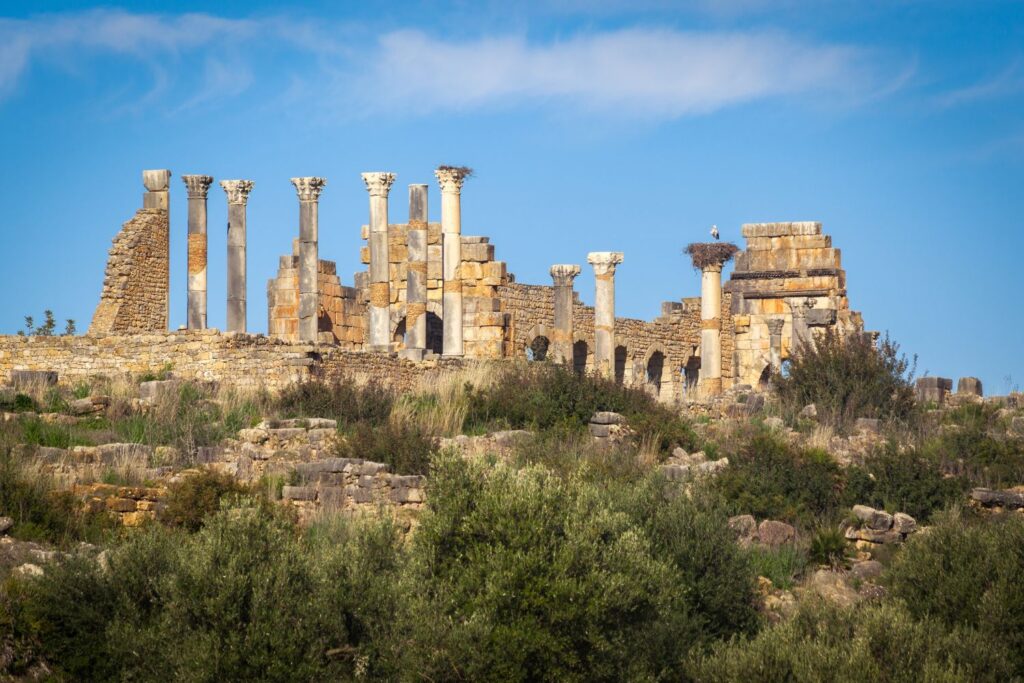

Historical Insights:
- Roman Hub: Volubilis was a flourishing Roman city dating back to the 3rd century BC and became a key administrative and economic center in the region.
- Cultural Exchange: The city was a melting pot of cultures, showcasing Roman architecture alongside influences from indigenous Berber and Punic cultures.
- UNESCO Recognition: Recognized as a UNESCO World Heritage site, Volubilis is celebrated for its well-preserved ruins, including intricate mosaics, triumphal arches, and grand villas.
Visitor Tips:
- Best Time to Visit: Plan your visit during the cooler months, from spring to fall, to explore Volubilis comfortably.
- Comfortable Footwear: Wear comfortable shoes as you’ll be walking on uneven surfaces and through the ancient ruins.
- Sun Protection: Bring sunscreen, a hat, and water, especially during the warmer months, as there is limited shade.
Lixus
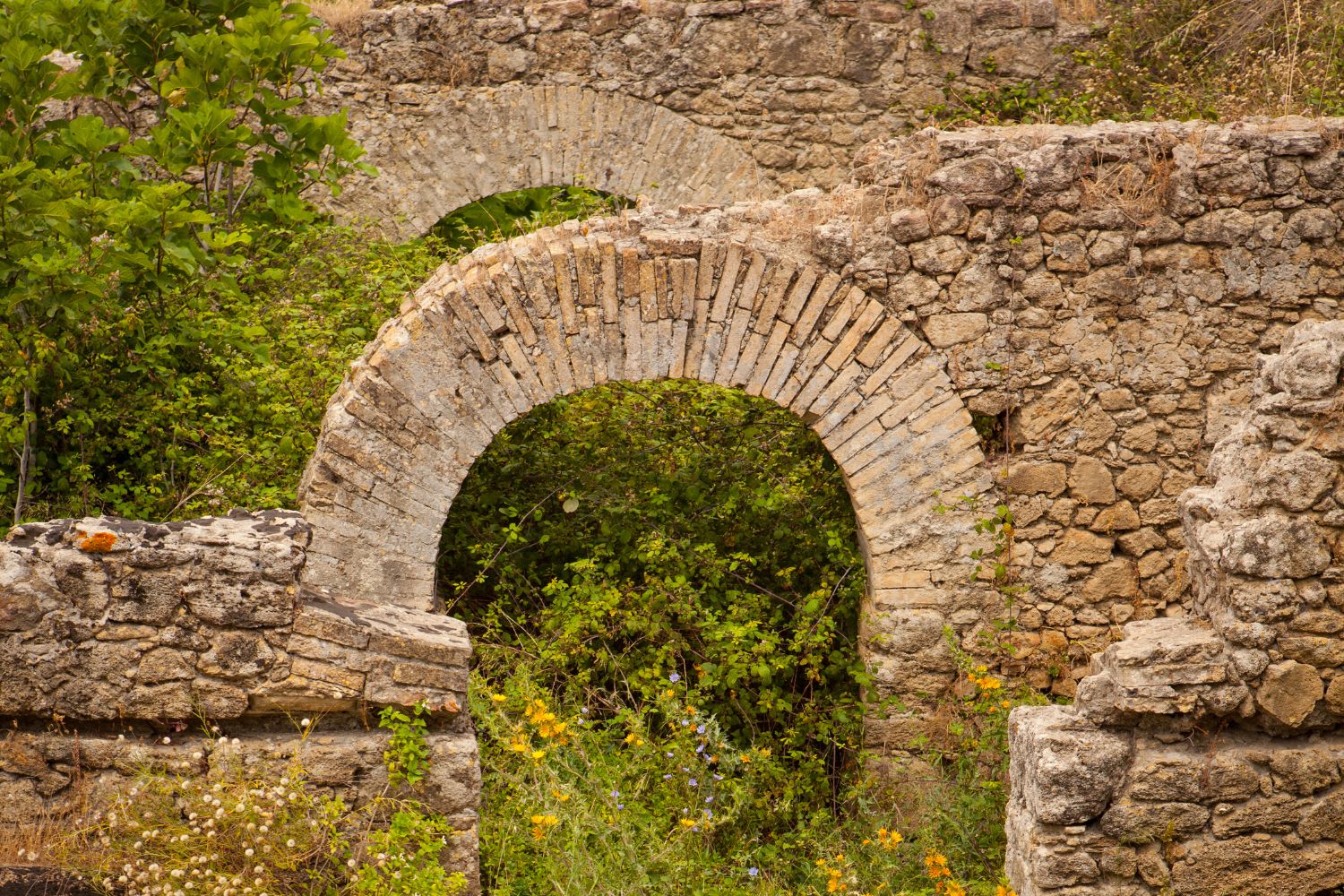
Lixus, an ancient city on the Moroccan coast, whispers tales of a rich past against the backdrop of the Atlantic Ocean. Steeped in history, this archaeological site unveils the remnants of a once-thriving Roman city. As you explore the ruins, the echoes of Lixus’ maritime legacy come to life, showcasing its strategic importance as a bustling port.
Wandering through Lixus, visitors encounter the remains of Roman villas, intricate mosaics, and the iconic Capitol, which once stood as a symbol of the city’s prominence. The archaeological site not only offers glimpses into the architectural grandeur of the past but also reveals the cultural and economic exchanges that shaped Lixus into a flourishing center of commerce and culture.
Perched on the coastal cliffs, Lixus presents panoramic views of the Atlantic, adding a touch of natural splendor to its historical charm. The combination of ancient ruins and the rhythmic waves of the ocean creates a serene and reflective atmosphere, inviting travelers to step back in time while embracing the coastal beauty that defines Lixus.
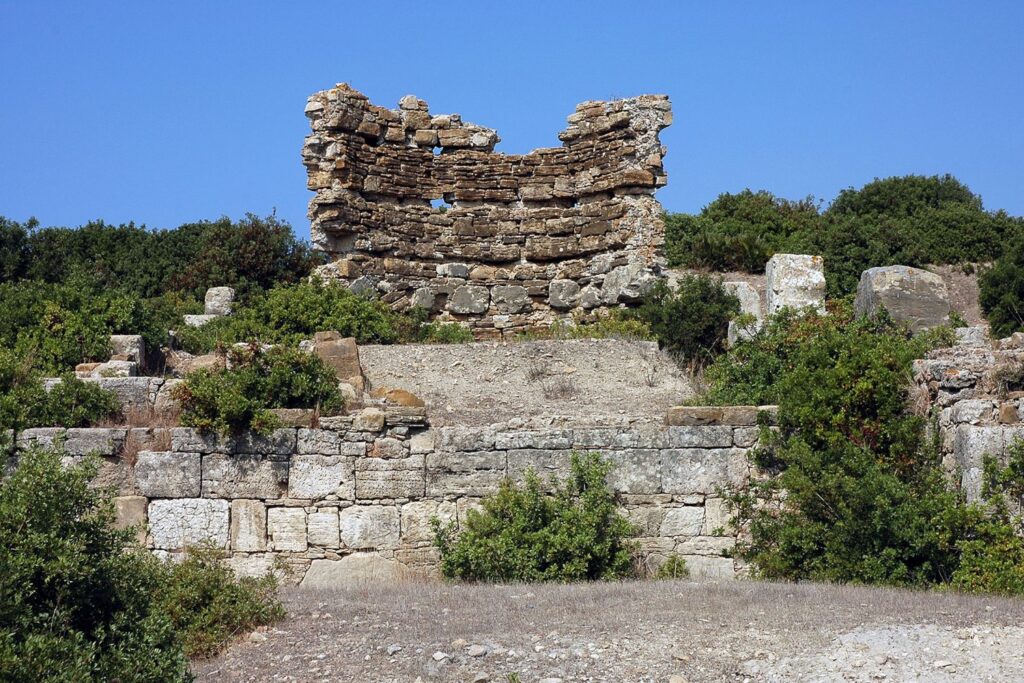
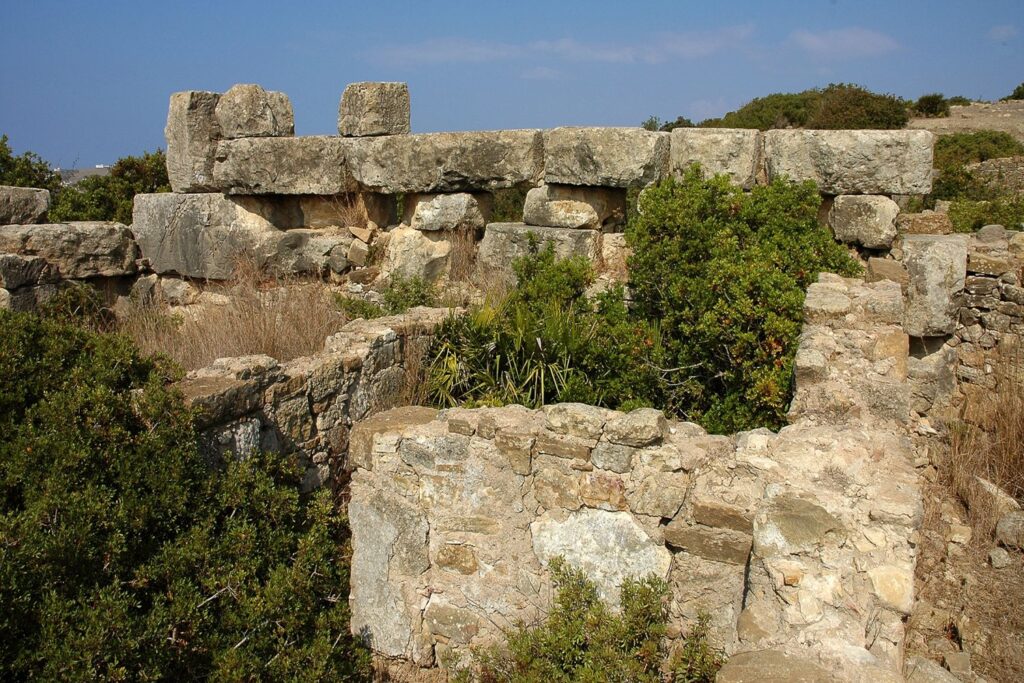
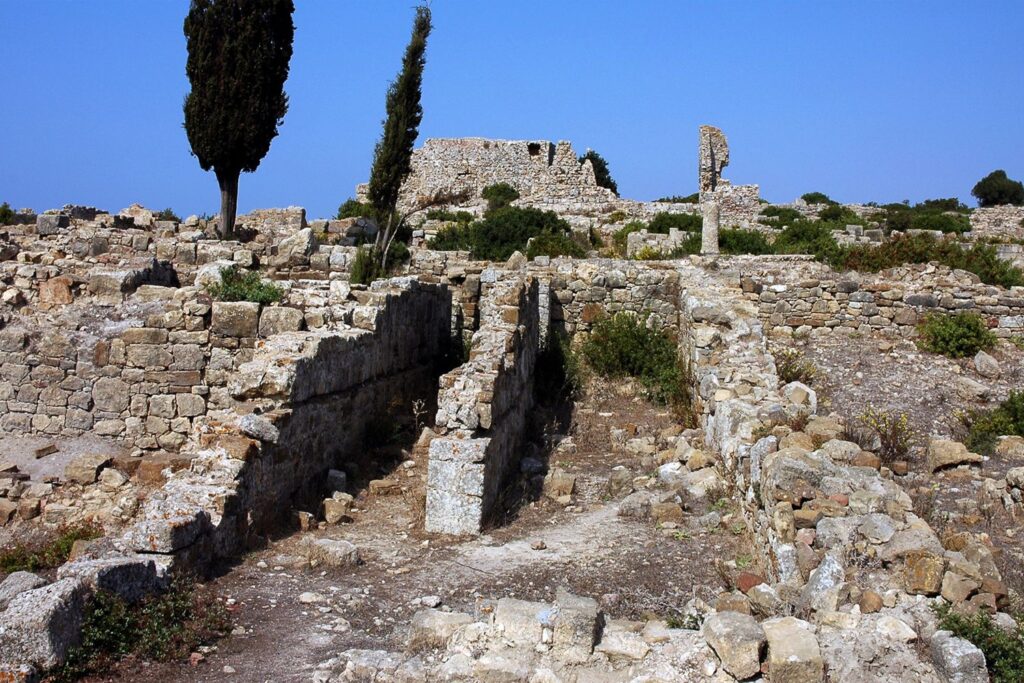
Historical Insights:
- Phoenician Origins: Lixus has ancient Phoenician roots and evolved into a significant Roman settlement and later a medieval Islamic city.
- Trade and Commerce: Positioned as a coastal city, Lixus played a crucial role in maritime trade and commerce, connecting North Africa with Europe.
- Archaeological Treasures: The site boasts Roman walls, Islamic monuments, and a variety of artifacts, providing insights into its diverse historical phases.
Visitor Tips:
- Access Information: Check the opening hours and accessibility of Lixus, as archaeological sites may have specific visiting times.
- Binoculars: Bring binoculars for bird-watching, as Lixus is known for its diverse bird species.
- Comfortable Clothing: Wear comfortable clothing and sturdy shoes for exploring the site’s diverse terrain.
Sala colonia – Chellah
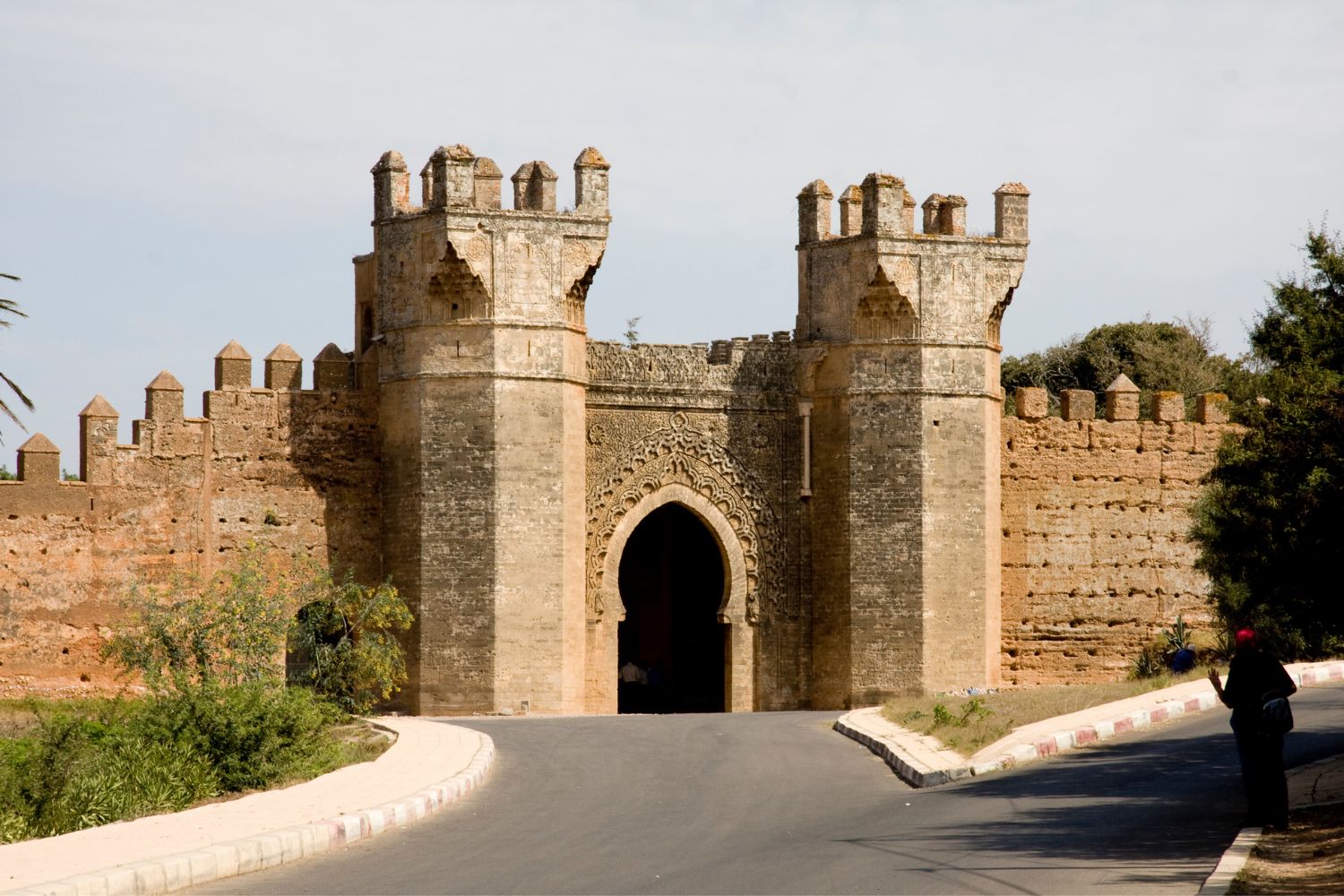
Sala Colonia, better known today as Chellah, stands as a captivating historical site near Rabat, Morocco. Once a thriving Roman settlement, this ancient city transformed over the centuries, bearing witness to various civilizations. The remnants of Sala Colonia reveal a fascinating blend of Roman, Islamic, and medieval architecture, creating a mosaic of historical layers.
Wandering through Chellah, visitors encounter well-preserved Roman walls, Islamic monuments, and the striking minaret of the Bou Inania Madrasa. The site’s peaceful gardens, adorned with fragrant flowers and towering cypress trees, offer a serene atmosphere that contrasts with the bustling city beyond its walls.
Chellah’s historical significance goes beyond its architectural wonders; it is also a necropolis, a resting place for departed souls. The ancient ruins and the haunting beauty of the abandoned city create an ambiance that speaks to the passage of time. As you explore Sala Colonia, you embark on a journey through history, from its Roman origins to its later Islamic and medieval influences, all set against the tranquil backdrop of Chellah’s gardens.
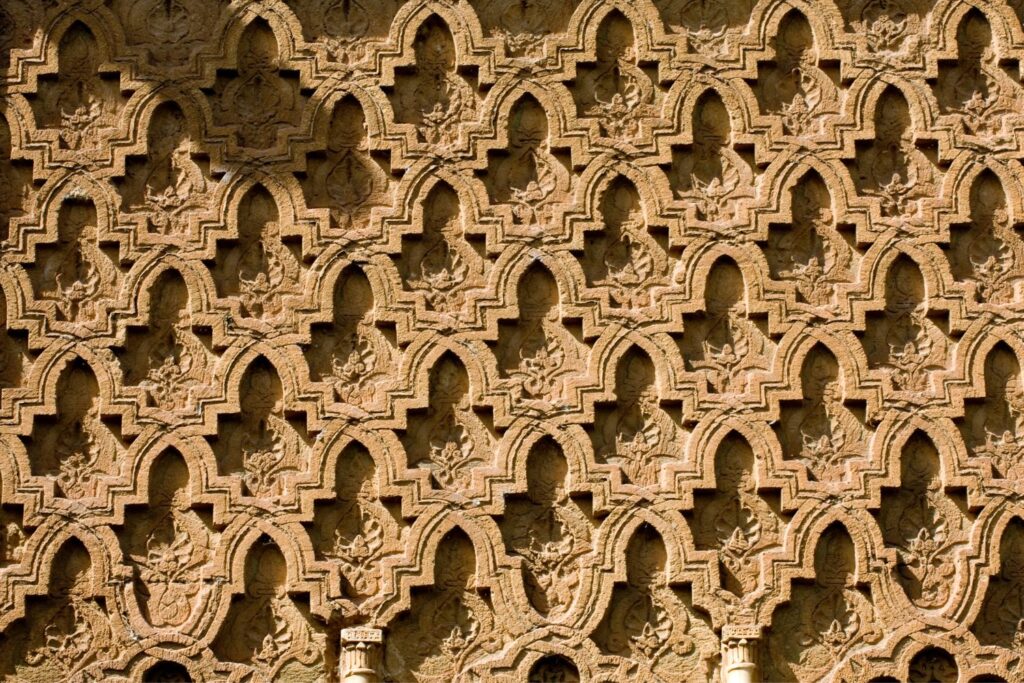
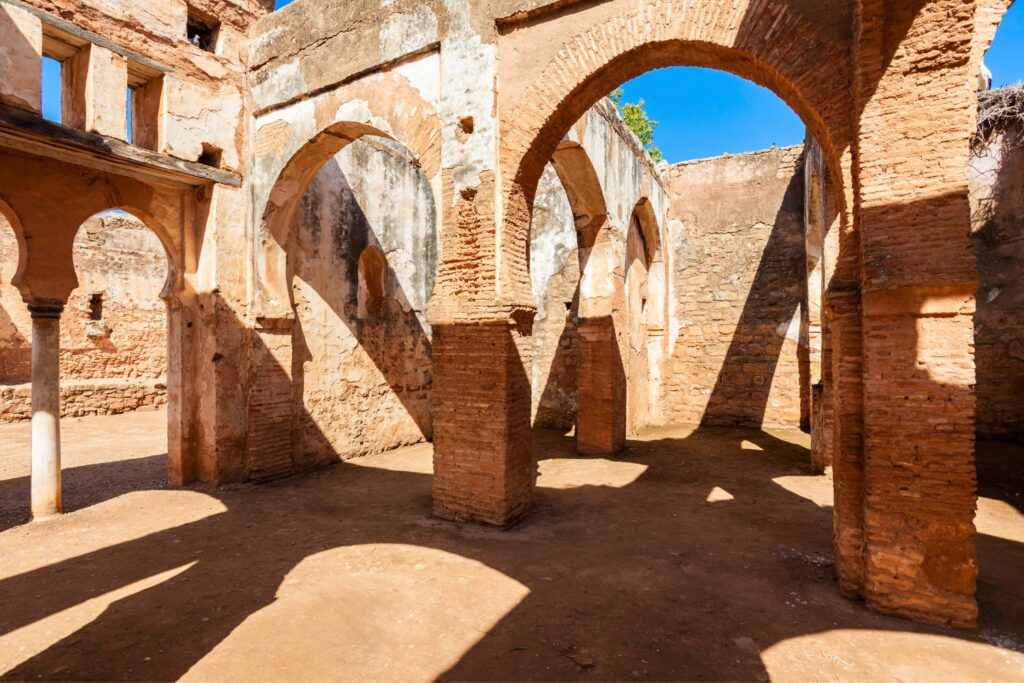
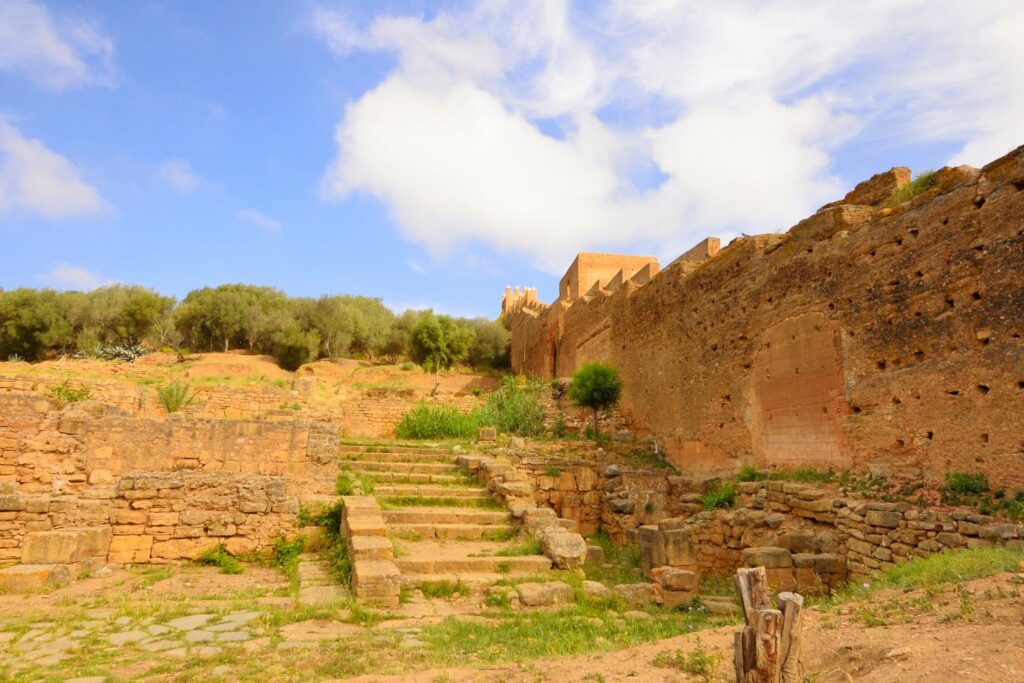
Historical Insights:
- Roman Beginnings: Originally known as Sala Colonia, this site traces its origins to a Roman settlement founded in the 1st century AD.
- Islamic Influence: Over the centuries, Chellah saw the rise of Islamic architecture and became a necropolis, housing medieval Islamic monuments and tombs.
- Cultural Fusion: The juxtaposition of Roman ruins and Islamic structures in Chellah reflects the cultural and historical layers that have shaped its identity.
Visitor Tips:
- Photography Gear: Capture the beauty of Chellah by bringing a camera or smartphone for photography.
- Respectful Attire: As Chellah is also a necropolis, dress modestly out of respect for the historical and sacred nature of the site.
- Weekday Visits: Visit on weekdays to avoid larger crowds and enjoy a more serene experience.
- Picnic: Pack a small picnic to enjoy in the picturesque gardens within Chellah.
Aït Ben Haddou
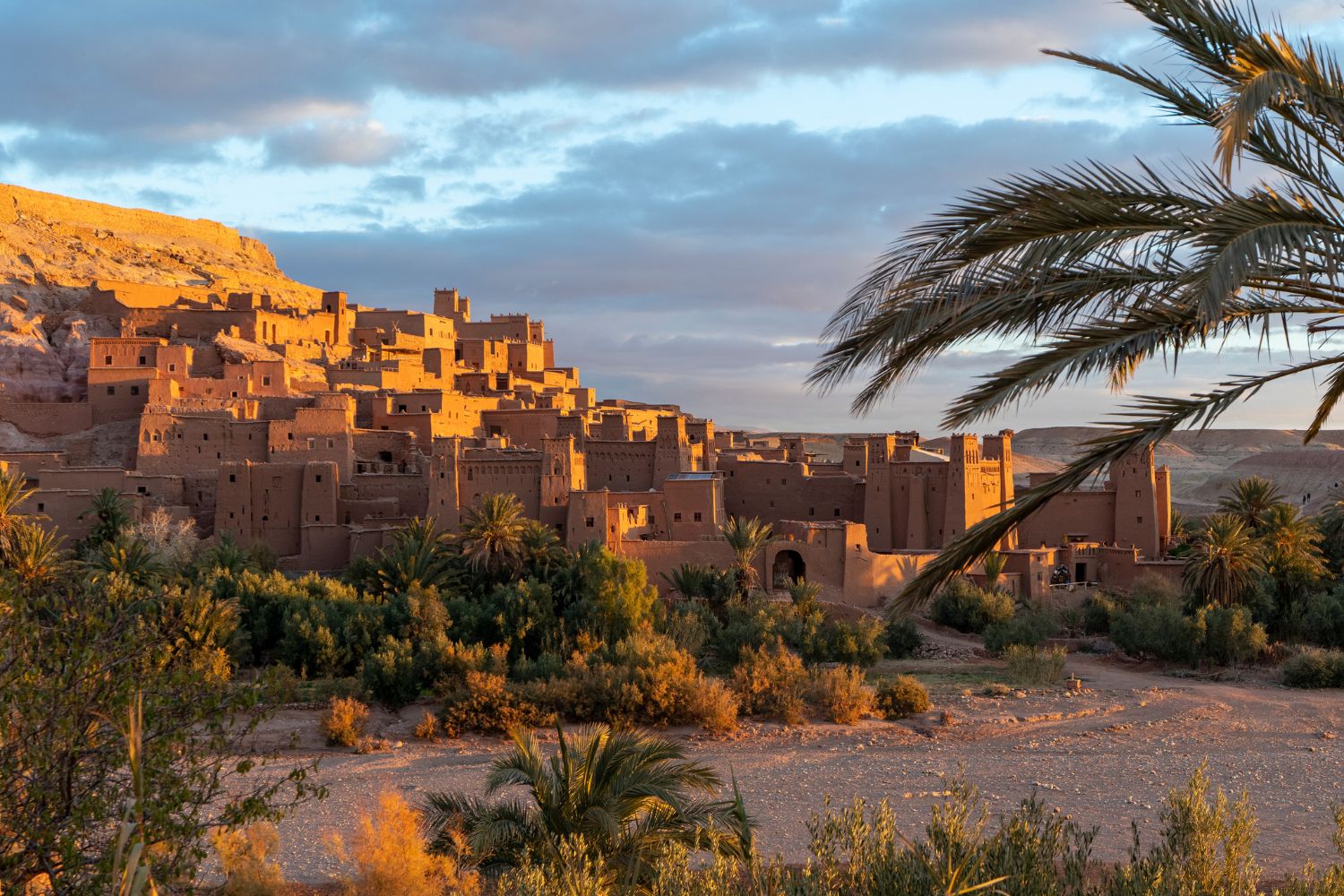
Aït Ben Haddou, a UNESCO World Heritage site, transports visitors to the heart of Morocco’s cinematic and historical allure. Nestled on the edge of the High Atlas Mountains, this ancient mud-brick ksar (fortified village) stands as a testament to traditional Moroccan architecture.
As you traverse the labyrinthine alleys of Aït Ben Haddou, you’ll witness the intricate craftsmanship of the earthen buildings that rise majestically against the desert landscape. This iconic ksar has served as the backdrop for numerous films and TV shows, its timeless beauty capturing the imaginations of filmmakers and travelers alike.
The fortified village is a living museum, with families still residing within its ancient walls, preserving centuries-old traditions. Aït Ben Haddou’s kasbahs and towers provide panoramic views of the surrounding arid plains, offering a glimpse into the strategic importance of this historical gem.
Aït Ben Haddou invites you to step back in time, its earthen architecture and cinematic history weaving a captivating narrative against the backdrop of Morocco’s rugged terrain. Whether you’re captivated by its cultural richness or drawn to its cinematic mystique, this ancient ksar promises an unforgettable journey through time.
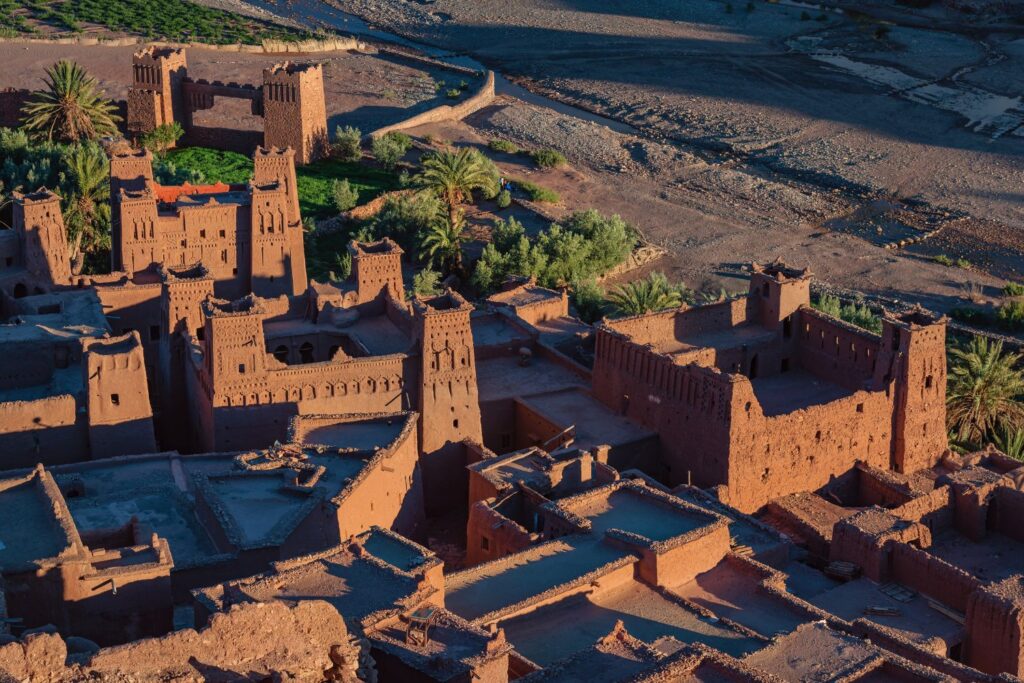
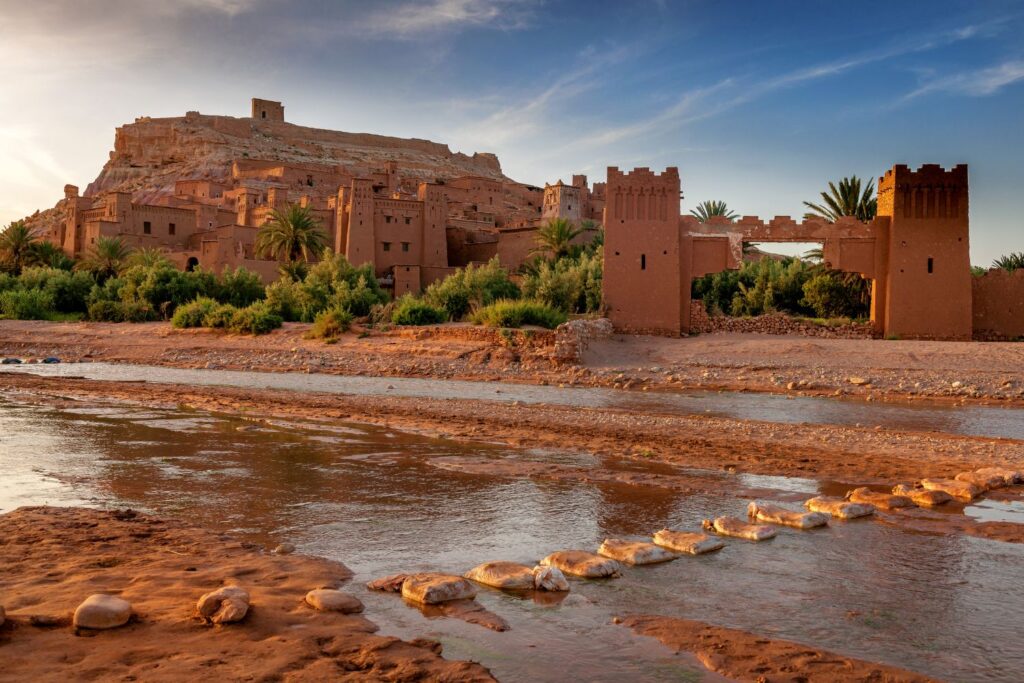
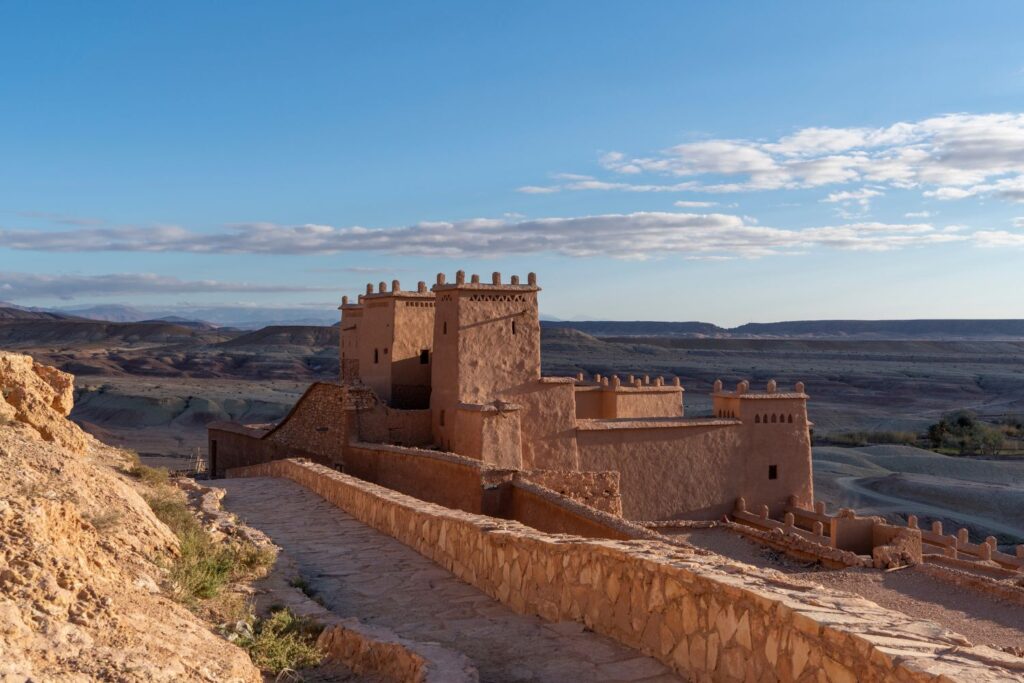
Historical Insights
- Ancient Ksar: Aït-ben-Haddou is a UNESCO-listed ksar, showcasing traditional Moroccan earthen architecture and serving as a strategic trading post.
- Cinematic Legacy: Renowned for its cinematic appearances, the ksar has been featured in films like “Gladiator” and “Game of Thrones,” contributing to its global recognition.
- Living Heritage: While a tourist attraction, Aït-ben-Haddou remains inhabited, providing a glimpse into the enduring traditions and lifestyle of its residents.
Visitor Tips:
- Sunset/Sunrise: Experience the magical ambiance of Aït-ben-Haddou during sunrise or sunset for stunning views and optimal lighting.
- Comfortable Footwear: Wear comfortable shoes suitable for walking through the narrow alleys and stairs of the ksar.
- Film Enthusiasts: If you’re a movie buff, explore the ksar with a list of films shot there to recognize iconic scenes.
- Local Crafts: Explore local craft shops to purchase unique souvenirs and support the artisans.
Immerse yourself in the cultural richness, cinematic legacies, and architectural wonders of these ancient cities. Whether tracing the footsteps of Roman conquerors, exploring coastal ruins, marveling at cultural fusion, or reliving cinematic scenes, each city offers a unique chapter in Morocco’s captivating history. Embark on a journey through time and discover the secrets held within the ancient stones of Morocco’s historical gems.